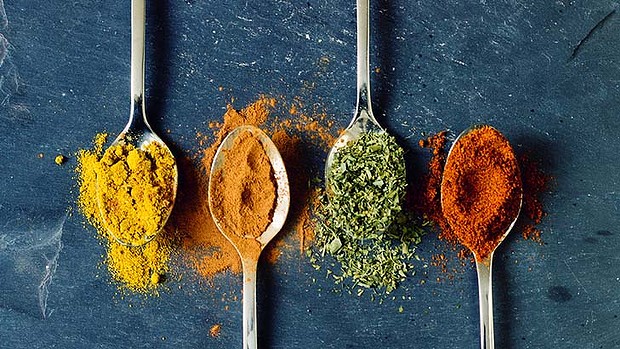
Turmeric: is the humble yellow spice, on the left, the ‘new’ blockbuster nutrient? Photo: Leentje photography by Helaine W
The ‘new’ blockbuster nutrient is actually really old.
There are some fairly audacious statements being made about the benefits of turmeric.
The unassuming spice is also being dubbed as the ‘new Omega 3’ for its anti-inflammatory and fat metabolism properties.
Turmeric is said to help with everything from heart disease to Alzheimers, asthma to arthritis. A potent antioxident, it is even said to slow the ageing process.
No surprises then that hipsters have taken to juicing it and having it in straight shots or mixed with juice.
In India, turmeric has been used traditionally as a disinfectant and treatment for sore throats.
The 5000-year-old herb is so revered, it is also used as an offering of good will and, mixed with lime, to make the paint for Bindis.
One of the most researched supplements out there, turmeric, which is part of the ginger family, is one that seems to live up to much of the hype.
Omega 3s and turmeric, with its active ingredient curcumin, are “blockbuster nutrients”, according to professor Marc Cohen, head of Complementary Medicines at RMIT.
“Turmeric is a powerful antioxidant which stops lipid oxidation and is anti-inflammatory,” says Cohen, who devoted an entire chapter to turmeric in his book, Herbs and Natural Supplements: An Evidence-Based Guide.
“It is a possible aid in preventing chronic degenerative diseases like Alzheimer’s disease.”
In fact, the high intake of turmeric in the Indian diet has been attributed to their rates of Alzheimer’s disease, which are amongst the lowest in the world.
Cohen, who suffers from osteoarthritis, is such a fan of the spice that he takes it daily.
“I’d recommend half to one teaspoon daily, but there’s not a prescribed dose … and no toxicity levels.”
As well as using it in curries (where it is responsible for the yellow colour) and smoothies, he often has it with milk as the fat, he explains, helps absorption.
Absorption has been one of the issues with turmeric’s abundant benefits.
“A key challenge we have faced in the past is how to ensure curcumin is absorbed into the body to provide therapeutic benefit.”
A recently released supplement called Theracumin, formulated from curcumin, claims to have overcome this problem, at least in part.
“Theracumin has 27 times the bioavailability of curcumin,” Cohen says.
“I’ve been recommended to take non-steroidal anti-inflammatory drugs,” he says for his osteoarthritis.
“Rather than take Voltaren, I’d prefer to take theracumin … Instead of adverse side effects likely to have positive side effects.”
Not everyone is convinced however that a curcumin supplement beats turmeric, if you’re going down that route. Dr Andrew Weil, Director of the Arizona Center for Integrative Medicine at the University of Arizona, picks the whole spice over isolated compounds.
“I frequently recommend turmeric supplements,” he says, “and I believe whole turmeric is more effective than isolated curcumin for inflammatory disorders, including arthritis, tendonitis, and autoimmune conditions.”
Taking a natural-first approach, in this instance, is not a bad idea, says Melanie McGrice, spokeswoman for the Dietitians Association of Australia.
“I think it’s always great to try natural food sources before turning to medications,” she says. “Turmeric certainly has a lot of health benefits, especially because it is so rich in antioxidants.”
While Cohen says he takes the therapeutic dose specifically to help treat his condition, it isn’t necessary for all of us: “Fresh turmeric is recommended for everyday use.”
